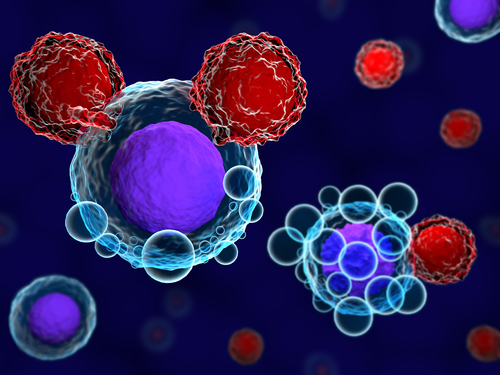The European Medicines Agency (EMA) has approved Sophiris Bio’s design for a Phase 3 trial to evaluate the potential of topsalysin (PRX302), an investigative agent for localized prostate cancer.
The trial plans to enroll 700 men with intermediate risk disease, who will be randomized to either a single injection of topsalysin or a placebo. Its main goal is to determine the proportion of patients who fail to respond to the treatment within the first year of receiving it, as defined by evidence disease progression and a need for additional treatments.
Results from the Phase 3 trial, if successful, will be used to support a request for topsalysin’s approval in Europe, Sophiris said.
Topsalysin is an engineered protein that forms small pores in cells, causing their contents to leak, which ultimately leads to their death. To prevent damage to healthy cells, the protein only becomes active in the presence of active prostate-specific antigen (PSA), a protein that is produced in excess by prostate cancer cells.
Topsalysin can be delivered directly into the prostate tumor, reducing the risk of damage to neighboring cells and tissues in patients with localized prostate cancer and with a low risk for cancer spreading. In this way, it is designed to avoid many side effects of more radical therapies, including surgery to remove the entire prostate and radiotherapy, which can lead to erectile dysfunction, urinary incontinence, and rectal toxicity.
Previous Phase 1 (NCT00379561) and Phase 2 (NCT00686088) trials showed that topsalysin was well-tolerated, with no serious side effects identified.
A small Phase 2a proof-of-concept trial (NCT02499848) reported that two of 18 patients, 24 weeks after treatment, achieved a complete tumor response and had no signs of cancer at six months. Seven others achieved a partial response, showing a decrease in tumor size or disease severity.
In a Phase 2b trial (NCT03081481), likewise, 10 out of 37 patients given a single administration of topsalysin had either a complete tumor response or a marked reduction in tumor burden within six months, as shown by a biopsy analysis. Six of these 10 people had no signs of cancer at six months. Another 15 patients (41%) showed a partial response in their tumors. Twelve people, or 32% of those treated, failed to respond to topsalysin.
This trial also assessed the safety of a second dose of topsalysin and whether it could lead to added clinical benefit, as determined by a biopsy analysis six months following re-infusion. The second dose was given only to partial responders with no adverse events of concern.
In total, 10 patients received a second infusion, and top-line results showed this use was safe and well-tolerated. But no added benefits were reported.
“These data show that 27% of the patients who receive a single administration of topsalysin may avoid or delay the need for alternative treatment for their localized prostate cancer. Taking into account the observed efficacy and safety profile to date following a single administration, we believe urologists would welcome a treatment like topsalysin for men with clinically-significant localized prostate cancer,” Mark Emberton, lead investigator for the Phase 2b trial and dean of University College London Faculty of Medical Sciences, said in a press release.
“Based on the safety profile of topsalysin in 451 patients in our clinical development program along with the efficacy seen in our Phase 2 studies … we are pleased to have now obtained formal feedback” from the EMA, Randall Woods, president and CEO of Sophiris, said in a press release.
“We believe that data from a single Phase 3 trial, if successful, will be sufficient to support market approval in Europe,” he added. Plan are underway for a similar discussion with regulatory officials in the U.S.
Topsalysin is also in advanced clinical testing to treat enlarged prostates, a condition known as benign prostatic hyperplasia or BPH.

